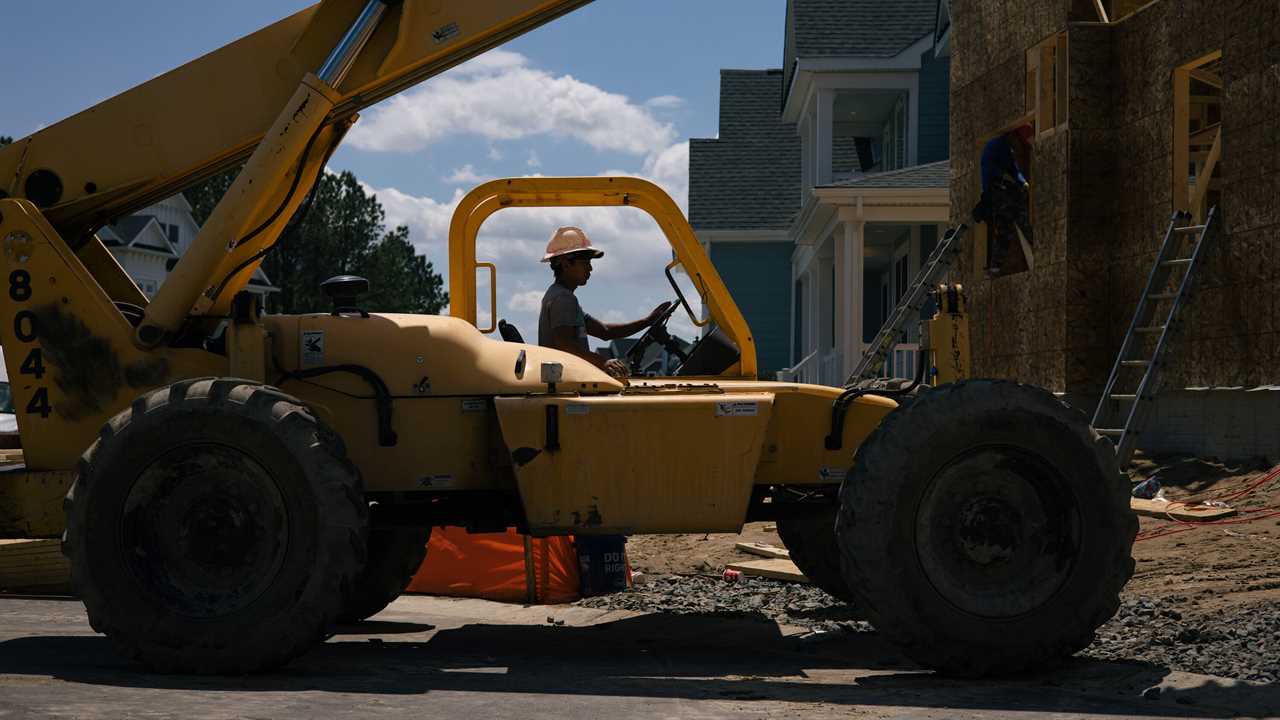
WASHINGTON — The infrastructure bill that President Biden hopes to get through Congress is supposed to create jobs and spur projects for companies like Anchor Construction, which specializes in repairing aging bridges and roadways in the nation’s capital.But with baby boomers aging out of the work force and not enough young people to replace them, John M. Irvine, a senior vice president at Anchor, worries there will not be enough workers to hire for all those new projects.“I’d be surprised if there’s any firm out there saying they’re ready for this,” said Mr. Irvine, whose company is hiring about a dozen skilled laborers, pipe layers and concrete finishers. If the bill passes Congress, he said, the company will most likely have to double the amount it is hiring.“We will have to staff up,” Mr. Irvine said. “And no, there are not enough skilled workers to fill these jobs.”Mr. Biden has hailed the $1 trillion infrastructure bill as a way to create millions of jobs, but as the country faces a dire shortage of skilled workers, researchers and economists say companies may find it difficult to fill all of those positions.The bill could generate new jobs in industries critical to keeping the nation’s public works systems running, such as construction, transportation and energy. S&P Global Ratings estimated that the bill would lift productivity and economic growth, adding $1.4 trillion to the U.S. economy over eight years. But if there is not enough labor to keep up with the demand, efforts to strengthen the nation’s highways, bridges and public transit could be set back.“Do we have the work force ready right now to take care of this? Absolutely not,” said Beverly Scott, the vice chair of the President’s National Infrastructure Advisory Council..css-1xzcza9{list-style-type:disc;padding-inline-start:1em;}.css-3btd0c{font-family:nyt-franklin,helvetica,arial,sans-serif;font-size:1rem;line-height:1.375rem;color:#333;margin-bottom:0.78125rem;}@media (min-width:740px){.css-3btd0c{font-size:1.0625rem;line-height:1.5rem;margin-bottom:0.9375rem;}}.css-3btd0c strong{font-weight:600;}.css-3btd0c em{font-style:italic;}.css-1kpebx{margin:0 auto;font-family:nyt-franklin,helvetica,arial,sans-serif;font-weight:700;font-size:1.125rem;line-height:1.3125rem;color:#121212;}#NYT_BELOW_MAIN_CONTENT_REGION .css-1kpebx{font-family:nyt-cheltenham,georgia,'times new roman',times,serif;font-weight:700;font-size:1.375rem;line-height:1.625rem;}@media (min-width:740px){#NYT_BELOW_MAIN_CONTENT_REGION .css-1kpebx{font-size:1.6875rem;line-height:1.875rem;}}@media (min-width:740px){.css-1kpebx{font-size:1.25rem;line-height:1.4375rem;}}.css-1gtxqqv{margin-bottom:0;}.css-19zsuqr{display:block;margin-bottom:0.9375rem;}.css-12vbvwq{background-color:white;border:1px solid #e2e2e2;width:calc(100% - 40px);max-width:600px;margin:1.5rem auto 1.9rem;padding:15px;box-sizing:border-box;}@media (min-width:740px){.css-12vbvwq{padding:20px;width:100%;}}.css-12vbvwq:focus{outline:1px solid #e2e2e2;}#NYT_BELOW_MAIN_CONTENT_REGION .css-12vbvwq{border:none;padding:10px 0 0;border-top:2px solid #121212;}.css-12vbvwq[data-truncated] .css-rdoyk0{-webkit-transform:rotate(0deg);-ms-transform:rotate(0deg);transform:rotate(0deg);}.css-12vbvwq[data-truncated] .css-eb027h{max-height:300px;overflow:hidden;-webkit-transition:none;transition:none;}.css-12vbvwq[data-truncated] .css-5gimkt:after{content:'See more';}.css-12vbvwq[data-truncated] .css-6mllg9{opacity:1;}.css-qjk116{margin:0 auto;overflow:hidden;}.css-qjk116 strong{font-weight:700;}.css-qjk116 em{font-style:italic;}.css-qjk116 a{color:#326891;-webkit-text-decoration:underline;text-decoration:underline;text-underline-offset:1px;-webkit-text-decoration-thickness:1px;text-decoration-thickness:1px;-webkit-text-decoration-color:#326891;text-decoration-color:#326891;}.css-qjk116 a:visited{color:#326891;-webkit-text-decoration-color:#326891;text-decoration-color:#326891;}.css-qjk116 a:hover{-webkit-text-decoration:none;text-decoration:none;}Understand the Infrastructure Bill
One trillion dollar package passed. The Senate passed a sweeping bipartisan infrastructure package on Aug. 10, capping weeks of intense negotiations and debate over the largest federal investment in the nation’s aging public works system in more than a decade.The final vote. The final tally in the Senate was 69 in favor to 30 against. The legislation, which still must pass the House, would touch nearly every facet of the American economy and fortify the nation’s response to the warming of the planet.Main areas of spending. Overall, the bipartisan plan focuses spending on transportation, utilities and pollution cleanup.Transportation. About $110 billion would go to roads, bridges and other transportation projects; $25 billion for airports; and $66 billion forBy: Madeleine Ngo
Title: Skilled Workers Are Scarce, Posing a Challenge for Biden’s Infrastructure Plan
Sourced From: www.nytimes.com/2021/09/09/us/politics/skilled-workers-biden-infrastructure.html
Published Date: Thu, 09 Sep 2021 09:00:16 +0000
Read More
Did you miss our previous article...
https://badpoliticians.com/us-politics/posttrump-curbs-on-executive-power-new-push-by-proponents
 UK PoliticsWorld PoliticsVideosPrivacy PolicyTerms And Conditions
UK PoliticsWorld PoliticsVideosPrivacy PolicyTerms And Conditions
